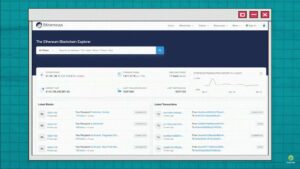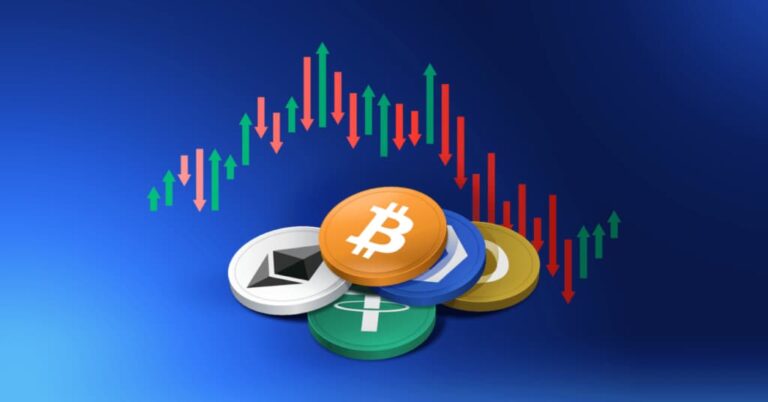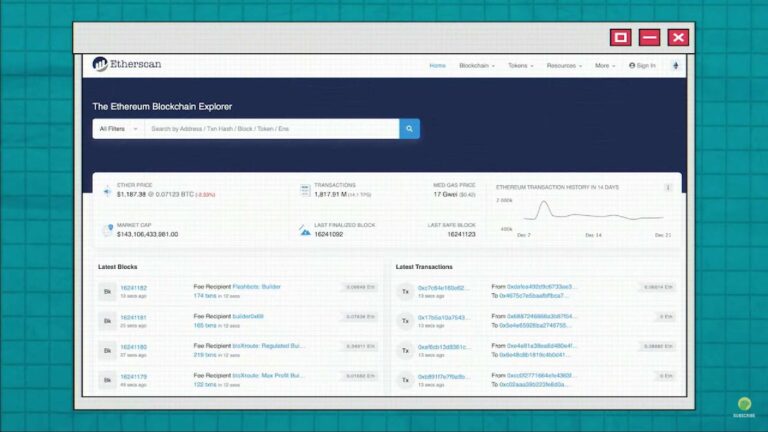Slippage holds a crucial significance for retail investors engaging in cryptocurrency trading, as it represents the discrepancy between the anticipated cost of a transaction and the actual execution price. In the following discussion, we delve into the concept of slippage within the crypto domain, elucidate its potential to amplify risk, and offer practical illustrations of strategies to mitigate it.
The Underlying Causes of Slippage
Slippage primarily arises from two key factors: market volatility and liquidity.
Market Volatility:
- Cryptocurrencies are known for their rapid and substantial price movements;
- For example, major cryptocurrencies like Bitcoin and Ethereum can experience sharp price increases or decreases within minutes;
- These sudden shifts can lead to a difference in price from when an order is placed to when it is executed, resulting in slippage.
Market Liquidity:
- Liquidity refers to how quickly and easily an asset can be bought or sold in the market without significantly affecting its price;
- Low-liquidity assets, often found in smaller altcoins, have fewer buyers and sellers. This leads to a larger spread (the gap between the buying and selling price) and can cause abrupt price changes;
- These market conditions are ripe for causing slippage, especially in trades involving less popular cryptocurrencies.
Slippage in Different Markets
While slippage is not exclusive to cryptocurrencies and can occur in forex and equity markets, it is more prevalent in the crypto sector. This is particularly true for decentralized exchanges (DEXs), where slippage can be a more frequent occurrence due to the nature of these platforms.
Upcoming Insights
In the following sections, we will explore strategies and tips to minimize slippage’s impact on your cryptocurrency trading. This will include practical advice, best practices, and tools to enhance your trading efficiency and reduce the risk of unexpected price shifts. Stay informed and learn how to navigate the crypto markets more effectively.
Unveiling the Dual-Faced Phenomenon: The World of Slippage
Slippage, often perceived as a simple concept, conceals a fascinating duality within its depths. Beyond its neutral facade, it possesses the power to shape a trader’s fortunes, be it for better or worse. Let’s embark on a journey to explore the intriguing dynamics of slippage, divided into its two distinct realms: Positive Slippage and Negative Slippage. Understanding these dimensions is paramount in navigating the intricate world of trading, where each can have a profound impact on your bottom line.
The Radiant Side: Positive Slippage
Positive slippage emerges as the unexpected boon for traders, like stumbling upon an extra scoop of your favorite ice cream in your sundae. It transpires when the execution price of a trade is more favorable than initially anticipated, opening the door to enhanced profits. Here’s a deeper dive into this phenomenon:
- Beneficial Price Surprises: Picture this scenario: you place a buy order for a cryptocurrency at $5,000, only to witness the market swiftly dip to $4,900 right as your order gets executed. You’ve just secured your asset at a lower price than expected, a delightful example of positive slippage in action. The same principle applies to sell orders – if the asset’s price surges higher than your projection, it translates into a larger profit margin;
- Maximizing Gains: Positive slippage doesn’t just boost profits; it can also amplify the effectiveness of your trading strategy. When it occurs consistently, it can turn small gains into substantial victories, making it a sought-after phenomenon for traders seeking to optimize their returns;
- Risk Mitigation: Incorporating positive slippage into your trading strategy can act as a natural hedge. It can offset potential losses from negative slippage, creating a balanced approach to risk management.
The Shadowy Side: Negative Slippage
On the flip side of this dynamic coin lies the ominous presence of negative slippage – the antithesis of its positive counterpart. Negative slippage strikes when the execution price of an order is disadvantageous compared to the trader’s initial expectations, leading to reduced profits or exacerbated losses:
- The Unfortunate Price Shift: Imagine a trader planning to buy a digital currency at $5,000, only to see a sudden surge in market prices that forces the execution to occur at $5,100. This extra $100 per unit of cryptocurrency becomes an unwanted expense, exemplifying negative slippage. Similarly, when executing sell orders, an execution price lower than anticipated diminishes the expected revenue, resulting in negative slippage’s impact on your portfolio;
- Risk Awareness: Negative slippage serves as a stark reminder of the unpredictable nature of financial markets. Acknowledging its existence is essential for risk management. It prompts traders to implement strategies that safeguard against potential losses stemming from adverse price fluctuations;
- Prevention and Mitigation: While negative slippage cannot be entirely eliminated, traders can take measures to reduce its occurrence. Employing limit orders and trading during periods of higher liquidity are strategies to mitigate the adverse effects of negative slippage.
The Symbiosis of Slippage: Balancing Act
Both positive and negative slippage are integral facets of the trading landscape, intrinsically linked to market conditions and price volatility. To master the art of trading effectively, it’s crucial to comprehend the symbiotic relationship between these two forces. Here are some insights to keep in mind:
- Market Conditions Matter: The prevalence of slippage, whether positive or negative, depends on market dynamics. Highly volatile markets are more susceptible to slippage, emphasizing the need for vigilance during turbulent times;
- Risk Management: Crafting a robust risk management strategy that considers both positive and negative slippage is imperative. Diversifying your assets, setting stop-loss orders, and implementing sound trading practices can help maintain a balanced risk-reward profile;
- Continuous Learning: The world of trading is ever-evolving. Staying informed about market trends, new technologies, and trading strategies is essential for adapting to changing conditions and minimizing the impact of slippage.
Navigating the Cryptocurrency Minefield: Strategies to Mitigate Slippage
Trading in the cryptocurrency domain is an exhilarating yet perilous endeavor, akin to venturing through a minefield filled with potential risks. Among these treacherous pitfalls, one that often catches traders off guard is the insidious beast known as slippage. It’s an adversary that cannot be entirely vanquished, but fear not, for there are formidable strategies in a trader’s arsenal to significantly limit its impact and safeguard those hard-earned profits.
Strategy 1: Embrace Limit Orders Over Market Orders
When it comes to managing slippage, the choice between market orders and limit orders can be the linchpin of your trading success. Let’s delve deeper into this critical decision:
- Market Orders: These orders are designed for speed, executing at the best available price instantaneously. However, this need for rapid execution often leaves traders vulnerable to the unpredictable swings of slippage, especially in times of market volatility;
- Limit Orders: On the other hand, limit orders put you firmly in the driver’s seat. When you place a limit order, you specify a particular price at which you’re willing to buy or sell an asset. This proactive approach acts as a shield against slippage, as your order will only execute at your chosen price or a better one.
Advantages of Limit Orders:
- Mitigates slippage risk by ensuring orders are executed at your predefined price or a more favorable one;
- Provides better control over your trading, allowing you to set precise entry and exit points;
- Reduces emotional trading, as you make decisions based on predetermined criteria rather than market fluctuations.
By choosing limit orders over market orders, you fortify your defenses against the capricious tides of price changes, sparing yourself from the clutches of detrimental slippage.
Strategy 2: Establish a Slippage Tolerance Threshold
Putting a slippage tolerance limit can act as a safety valve, protecting the trader from excessive value erosion caused by slippage. To illustrate, traders can set a certain percentage (say 1%) as their slippage tolerance. This ensures that no trade gets executed if the price deviation exceeds this predetermined threshold. Note, however, that setting this limit too low may hinder the execution of trades during high volatility, potentially causing traders to miss out on profitable trade windows.
Strategy 3: Effective Strategies for Navigating Market Volatility
Harnessing In-Depth Market Analysis
In the dynamic world of trading, staying ahead of market fluctuations is crucial. The key to overcoming the challenges posed by market volatility lies in a deep understanding of the traded assets and their behavior under various market conditions.
- Comprehensive Asset Analysis: Delve into the historical performance of the asset being traded. Study its past responses to different market scenarios to gain a nuanced understanding of its volatility patterns;
- Market Sensitivity Evaluation: Assess how different market events affect the asset. This involves analyzing how global economic news, industry-specific developments, or geopolitical events impact its price movements;
- Trading Platform Volatility Assessment: Each trading platform comes with its unique set of volatility characteristics. Understanding these can help in anticipating and mitigating risks associated with slippage.
Actionable Insights for Effective Trading
- Timing Trades: Utilize the acquired knowledge to time your trades more effectively. Recognizing patterns in volatility can guide decisions on when to enter or exit the market;
- Slippage Management Strategies: Choose and apply appropriate strategies to manage slippage. This might include setting stop-loss orders, opting for limit orders, or adjusting trade sizes based on current market volatility.
Navigating Market Uncertainty
While slippage is an inevitable aspect of trading, it doesn’t have to be a formidable obstacle. By employing strategic measures, traders can adeptly navigate through the uncertain terrain of market fluctuations.
- Embrace Volatility: View market volatility not as a threat, but as an opportunity. By mastering volatility forecasting, traders can turn potential risks into profitable ventures;
- Continual Learning and Adaptation: The market is ever-evolving. Continuous learning and adapting to new information and market trends are essential for sustained success in trading;
- Risk Management: Implement robust risk management protocols. This involves setting clear risk/reward parameters, diversifying portfolios, and maintaining discipline in trading practices.
Deciphering Slippage: A Comprehensive Guide to Accurate Slippage Calculation
Slippage, the subtle price variation that stands between your expected and actual trade execution, can be a game-changer in the world of trading. Whether it’s a welcome surprise or an unwelcome setback depends on whether you’re dealing with positive or negative slippage. Delving into the intricate process of calculating slippage is a pivotal first step towards mastering its dynamics. Slippage can be quantified in two distinct but equally insightful ways: as a tangible dollar value, offering a concrete assessment of your profit or loss, or as a percentage, revealing the relative extent of the price deviation. Let’s embark on a journey to explore both of these calculation methods in-depth, equipping you with the knowledge to navigate slippage effectively.

Comprehensive Guide to Understanding and Calculating Slippage in Trading
1. Unpacking the Concept of Slippage in the Financial Market
- Definition: Slippage in trading occurs when there is a variance between the anticipated price of a transaction and the actual price at which it is executed. This phenomenon is commonplace in the fluid and dynamic financial markets;
- Significance: The importance of understanding slippage lies in its direct influence on the profitability of trades. Even minor discrepancies can significantly affect investment outcomes.
2. Detailed Procedure for Calculating Slippage in Dollar Value
- Establishing the Anticipated Trade Price: The first step involves specifying the target price at which a trade is planned. This figure represents the trader’s ideal entry point in the market;
- Ascertainment of the Actual Trade Price: This involves determining the price at which the market actually executes the trade. Market conditions at the time of execution play a key role here;
- Computation of Slippage: By deducting the expected trade price from the actual executed price, the precise slippage amount in dollars is calculated;
- Analyzing the Outcome: Understanding the implication of the slippage value is crucial. A positive slippage indicates a less favorable execution than expected (potential loss), while a negative value suggests a more favorable outcome (potential gain);
- Illustrative Example: Consider a scenario where a trader aims to buy Bitcoin at $50,000, with a limit price of $50,500. If the market fills the order at $50,250, the slippage is $250, indicating a slight loss relative to the expected price.
3. Expressing Slippage as a Percentage: A Relative Measure
- Computing Dollar Slippage: This is the initial step, similar to the process mentioned above;
- Determining the Price Range: This step involves identifying the gap between the anticipated trade price and the set limit price;
- Percentage Calculation: The slippage amount is divided by the identified price range, and the result is multiplied by 100 to convert it into a percentage;
- Contextualizing Slippage Impact: Expressing slippage as a percentage provides a relative measure of its impact in relation to the total trade size, offering a more nuanced understanding;
- Practical Example: Using the Bitcoin example, the slippage percentage is calculated as 50% ($250 slippage divided by the $500 price range).
4. Strategic Implications and Best Practices
- Informed Decision-Making: Understanding both dollar and percentage slippage is essential for making strategic trading decisions;
- Risk Management: By monitoring slippage trends, traders can adapt their strategies to minimize potential losses;
- Market Conditions Awareness: Being cognizant of market volatility and liquidity can help in anticipating possible slippage scenarios;
- Order Type Utilization: Utilizing different order types like limit orders can help in managing slippage.
5. Enhancing Trading Performance Through Slippage Analysis
- Continuous Monitoring: Regular analysis of slippage helps in refining trading tactics;
- Performance Optimization: Understanding slippage dynamics contributes to optimizing trade execution and overall investment strategy;
- Balancing Expectations and Realities: Acknowledging the inevitability of slippage in trading helps in setting realistic expectations and better preparedness for market fluctuations.
Unlocking the Power of Slippage Calculation
Proficiency in slippage calculation, both in dollar terms and as a percentage, grants traders invaluable insights into their trading performance. It paves the way for well-informed decisions concerning order types, limit price settings, and adjustments to trading strategies. Moreover, it serves as a potent tool for evaluating the efficiency of your chosen trading platform and the liquidity of the assets you’re trading.
By mastering the art of deciphering slippage, you gain a competitive edge in the intricate landscape of financial markets, where every percentage point and dollar count. So, equip yourself with these calculation methods to navigate the unpredictable seas of trading with confidence and precision.
Conclusion
In summary, slippage is a challenge that traders and investors must contend with, but with the right knowledge and precautions, its impact can be minimized. By choosing the right broker, using different order types, implementing risk management strategies, and staying informed, traders can navigate the world of slippage more effectively and work towards achieving their financial goals in the markets.











